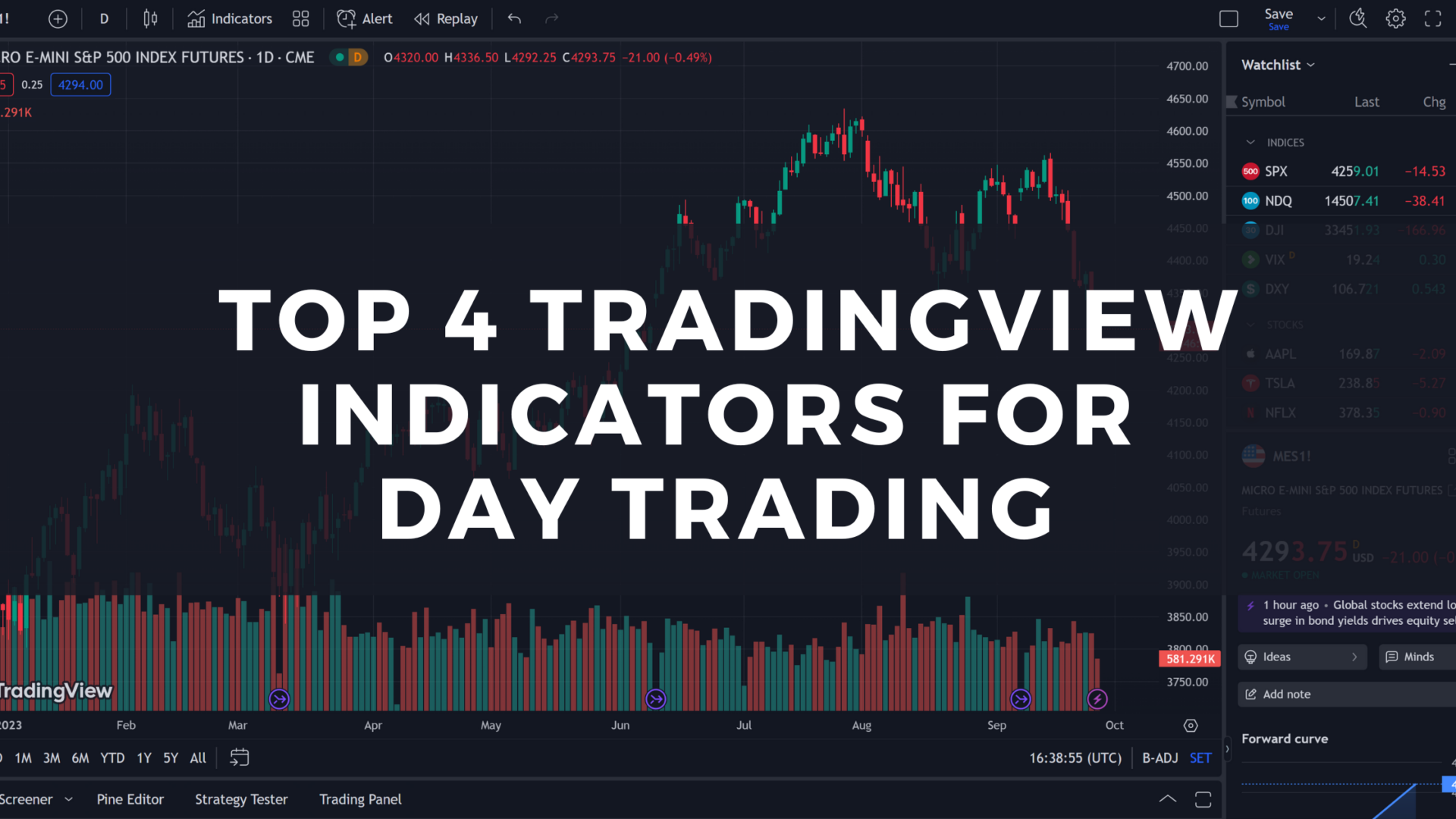Did you know that the average day trader makes more decisions in a single day than most people do in a week? In the fast-paced world of futures trading, mastering advanced techniques is essential for success. This article dives into the best strategies for day trading futures, focusing on effective risk management, crucial indicators, and the development of a winning trading strategy. You’ll learn how market and technical analysis, along with psychological discipline, can enhance your performance. Plus, we’ll cover common pitfalls to avoid and tools to optimize your trading setup. With insights from DayTradingBusiness, you'll be equipped to navigate the complexities of futures trading like a pro.
What are the best advanced techniques for day trading futures?
1. Order Flow Analysis: Use tools to analyze real-time buying and selling activity to identify market sentiment and potential reversals.
2. Market Profile: Study price distribution over time to determine support and resistance levels, enhancing entry and exit points.
3. Volume Profile: Focus on volume at price levels to spot areas of high trading activity, indicating potential breakout or reversal zones.
4. Algorithmic Trading: Implement automated trading systems to execute trades based on pre-defined criteria, improving speed and precision.
5. Technical Indicators: Use advanced indicators like the Relative Strength Index (RSI) or Moving Average Convergence Divergence (MACD) for momentum analysis.
6. Risk Management: Set strict stop-loss orders and position sizing rules to manage risk effectively and protect your capital.
7. News Trading: Monitor economic indicators and news releases that impact futures markets, and position trades accordingly.
8. Intermarket Analysis: Analyze relationships between different markets (e.g., commodities, stocks, currencies) to predict futures price movements.
9. Scalping Strategies: Focus on quick trades for small profits, requiring a deep understanding of market movements and timing.
10. Backtesting Strategies: Test your strategies on historical data to refine your approach and improve profitability.
How can I improve my risk management in futures trading?
To improve risk management in futures trading, start by setting strict stop-loss orders to limit potential losses. Use position sizing to ensure no single trade risks more than 1-2% of your capital. Diversify your trades across different contracts to spread risk. Analyze market conditions and volatility to adjust your strategies accordingly. Implement a risk-reward ratio of at least 1:2 for each trade to ensure potential gains outweigh risks. Regularly review and adjust your trading plan based on performance metrics and market changes. Finally, consider using options as a hedge to mitigate risk in your futures positions.
What indicators should I use for day trading futures?
Use indicators like moving averages (MA) for trend direction, the Relative Strength Index (RSI) for momentum, and Bollinger Bands for volatility. Also, consider using the Average True Range (ATR) to gauge market volatility and the MACD for potential buy and sell signals. Volume indicators are essential to confirm price movements. Adjust these indicators based on your specific trading strategy and market conditions.
How do I develop a winning trading strategy for futures?
To develop a winning trading strategy for futures, start by defining your goals and risk tolerance. Next, conduct thorough market analysis using both fundamental and technical indicators. Create a clear trading plan that outlines entry and exit points, stop-loss levels, and position sizes. Utilize backtesting to evaluate your strategy against historical data, adjusting as necessary. Stay informed about market news and economic events that impact futures prices. Finally, continuously monitor and refine your strategy based on performance and changing market conditions.
What role does market analysis play in day trading futures?
Market analysis is crucial in day trading futures as it helps traders identify short-term price movements and trends. By analyzing market data, such as price charts, volume, and economic indicators, traders can make informed decisions on entry and exit points. Technical analysis tools, like moving averages and oscillators, enhance this process by providing insights into potential market reversals or continuations. Fundamental analysis also plays a role, as news events can significantly impact futures prices. Overall, effective market analysis allows day traders to capitalize on volatility and manage risk more effectively.
How can I use technical analysis effectively in futures trading?
To use technical analysis effectively in futures trading, focus on these key techniques:
1. Chart Patterns: Identify patterns like head and shoulders or flags to predict price movements.
2. Indicators: Utilize moving averages, RSI, and MACD to gauge momentum and trend strength.
3. Support and Resistance: Determine key levels where prices tend to reverse to make informed entry and exit decisions.
4. Volume Analysis: Analyze trading volume to confirm trends; increasing volume can indicate stronger moves.
5. Candlestick Analysis: Study candlestick formations for insights into market sentiment and potential reversals.
6. Time Frames: Use multiple time frames to gain a comprehensive view of market trends and refine your strategy.
7. Risk Management: Set stop-loss orders based on technical levels to protect your capital.
By combining these techniques, you can enhance your decision-making process in futures trading.
What are the psychological aspects of day trading futures?
Day trading futures involves several psychological aspects. First, emotional discipline is crucial; traders must manage fear and greed to make rational decisions. Second, the pressure of quick decision-making can lead to stress, affecting performance. Third, overconfidence can result in reckless trades, while a lack of confidence may lead to missed opportunities. Lastly, maintaining a strong mindset is essential for resilience after losses and for staying focused on long-term strategies rather than short-term fluctuations.
How can I optimize my futures trading setup?

To optimize your futures trading setup, focus on these key aspects:
1. Technical Analysis: Use advanced indicators like Fibonacci retracement and moving averages to identify trends and entry points.
2. Risk Management: Set stop-loss orders and define your risk-reward ratio for each trade to protect your capital.
3. Trading Plan: Develop a clear strategy that outlines your goals, criteria for entering and exiting trades, and specific futures contracts to target.
4. Market Research: Stay updated with news and economic reports that impact futures markets. Use a calendar for key events.
5. Platform Setup: Choose a reliable trading platform with fast execution and customizable charts. Familiarize yourself with its features.
6. Backtesting: Analyze past trades using historical data to refine your strategies and identify what works best.
7. Trading Journal: Keep a detailed journal of your trades to review performance, mistakes, and successful strategies.
8. Psychological Preparedness: Cultivate discipline and emotional resilience to stick to your trading plan, especially during volatile periods.
Implement these techniques to enhance your futures trading performance.
What are the common mistakes to avoid in day trading futures?

1. Lack of a Trading Plan: Entering trades without a clear strategy can lead to impulsive decisions and losses.
2. Overleveraging: Using too much margin can amplify losses. Stick to manageable leverage.
3. Ignoring Risk Management: Not setting stop-loss orders increases the risk of significant losses. Always protect your capital.
4. Emotional Trading: Allowing fear or greed to dictate trades can cloud judgment. Stay disciplined and stick to your plan.
5. Chasing Losses: Trying to recover losses by taking high-risk trades often leads to deeper losses. Accept losses and move on.
6. Neglecting Market Analysis: Failing to conduct proper technical or fundamental analysis can result in poor trade entries and exits.
7. Trading Without Preparation: Entering the market without understanding current events or market conditions can be detrimental. Stay informed.
8. Overtrading: Taking too many positions can lead to burnout and mistakes. Focus on quality over quantity.
9. Ignoring Transaction Costs: Underestimating commissions and slippage can eat into profits. Factor these into your trading strategy.
10. Failing to Adapt: Sticking to outdated strategies in changing market conditions can lead to losses. Continuously refine your approach.
What are the advanced techniques for day trading futures?
Futures in day trading are contracts to buy or sell an asset at a predetermined price on a future date. Traders use futures to speculate on price movements, hedge against risks, or leverage their positions. Advanced techniques include scalping, using technical analysis for entry and exit points, and employing strategies like spread trading or arbitrage.
Learn more about: What Are Futures in Day Trading?
Learn about Advanced Techniques for Day Trading Stocks
How do I choose the right futures contracts to trade?
To choose the right futures contracts for day trading, focus on liquidity, volatility, and your trading strategy. Look for contracts with high trading volumes, like E-mini S&P 500 or crude oil futures, as they offer tighter spreads and easier entry/exit. Consider the volatility of the asset; contracts with higher price movements can provide more opportunities. Align your choice with your trading plan—whether you prefer trending markets or range-bound environments. Lastly, stay informed about market news affecting the contracts you’re interested in, as this can impact price movements significantly.
Learn about How to Choose the Right Futures Contracts for Day Trading
What tools can enhance my day trading performance in futures?
To enhance your day trading performance in futures, consider these tools:
1. Trading Platforms: Use platforms like Thinkorswim or NinjaTrader for advanced charting and analysis.
2. Technical Analysis Software: Tools like TradeStation or MetaTrader help analyze market trends and patterns.
3. News Aggregators: Services like Bloomberg or Reuters provide real-time news that impacts futures markets.
4. Risk Management Tools: Use position sizing calculators and stop-loss order features to manage risk effectively.
5. Algorithmic Trading: Implement automated trading systems to execute trades based on predefined criteria.
6. Market Sentiment Indicators: Tools that gauge trader sentiment can provide insights into potential price movements.
7. Economic Calendars: Keep track of key economic events that can influence futures prices.
Integrating these tools can significantly improve your trading strategy and decision-making process.
How can I leverage news and events for futures trading?
To leverage news and events for futures trading, start by identifying key economic reports, geopolitical developments, and industry news that impact the markets. Use a calendar to track upcoming events like earnings reports, interest rate announcements, and government data releases.
Analyze how these events historically affect specific futures contracts. For example, weather reports can influence agricultural futures, while employment data can impact stock index futures.
Implement a strategy to react quickly to news. Set alerts for critical updates and use limit orders to enter trades at desired price points. Finally, consider using technical analysis to confirm trade signals generated by news events, ensuring a well-rounded approach.
What are some advanced charting techniques for day trading futures?

1. Volume Profile: Analyze trading volume at different price levels to identify potential support and resistance zones.
2. Market Profile: Use price distribution over time to gauge market sentiment and find high-volume price areas.
3. Candlestick Patterns: Look for advanced patterns like engulfing, harami, or shooting stars to predict price reversals.
4. Multiple Time Frame Analysis: Combine signals from different time frames to confirm trends and entry points.
5. Fibonacci Retracement: Identify key levels for potential reversals or continuations by applying Fibonacci ratios.
6. Ichimoku Cloud: Use this comprehensive indicator to determine trend direction, support, and resistance levels.
7. Order Flow Analysis: Monitor real-time buying and selling pressure to gauge market strength and predict price movement.
8. Divergence Analysis: Look for discrepancies between price movements and indicators like RSI or MACD to identify potential reversals.
9. Heat Maps: Utilize heat maps to visualize market activity and spot areas of high trading interest quickly.
10. Algorithmic Trading Signals: Implement custom algorithms to automate trading based on predefined criteria and technical indicators.
Learn about Advanced Techniques for Day Trading Stocks
How can I use backtesting to refine my futures trading strategy?
To refine your futures trading strategy using backtesting, follow these steps:
1. Select Historical Data: Gather comprehensive historical price data for the futures contracts you trade.
2. Define Your Strategy: Clearly your trading rules, including entry and exit points, risk management, and position sizing.
3. Run Simulations: Use backtesting software to simulate trades based on your defined strategy using historical data.
4. Analyze Results: Review key metrics like win rate, average profit/loss, and drawdowns to assess performance.
5. Adjust Parameters: Modify your strategy based on backtesting results to improve profitability and reduce risk.
6. Validate with Forward Testing: After adjustments, test your refined strategy in a live environment with a demo account before trading with real capital.
By systematically applying these steps, you can effectively use backtesting to enhance your futures trading strategy.
Learn about How to Use News to Your Advantage in Futures Day Trading
What are the best practices for executing trades in futures markets?
1. Develop a Trading Plan: Clearly define your strategy, including entry and exit points, risk management, and profit targets.
2. Use Technical Analysis: Analyze charts and indicators to identify trends and potential reversal points.
3. Manage Risk: Set stop-loss orders to limit potential losses and use position sizing to control risk exposure.
4. Stay Informed: Follow market news, economic reports, and events that can impact futures prices.
5. Utilize Leverage Wisely: Understand how leverage works and avoid over-leveraging to minimize risk.
6. Practice Patience and Discipline: Stick to your plan and avoid emotional trading decisions.
7. Review and Adjust: Regularly analyze your trades to learn from mistakes and adjust your strategy as needed.
How can I stay disciplined in my day trading approach?
To stay disciplined in day trading futures, establish a clear trading plan with defined entry and exit points. Stick to your strategy, avoiding impulsive decisions based on emotions or market noise. Use stop-loss orders to manage risk and protect your capital. Keep a trading journal to review your trades and learn from mistakes. Set specific goals for each trading session and take breaks to maintain focus. Lastly, continuously educate yourself about market trends and techniques to enhance your skills.
Learn about How to Stay Disciplined in Futures Day Trading
Conclusion about Advanced Techniques for Day Trading Futures
Incorporating advanced techniques into your day trading strategy can significantly enhance your performance in futures markets. Focusing on risk management, utilizing key indicators, and conducting thorough market analysis are essential steps for success. Meanwhile, understanding the psychological aspects and avoiding common mistakes will keep you on track. Remember, tools and backtesting are vital for refining your approach. For further insights and tailored guidance, consider leveraging the expertise offered by DayTradingBusiness to elevate your trading game.
Learn about Advanced Techniques for Day Trading Stocks